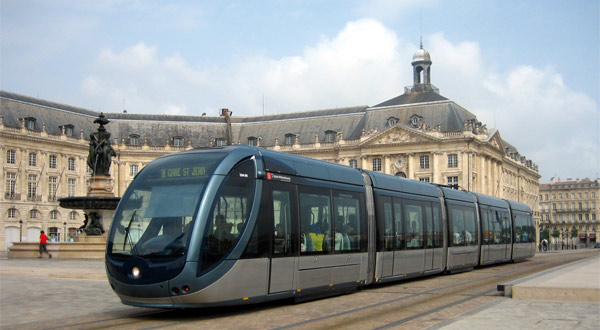Commitment to Tramways Makes France a World Model for New Urban Rail

from the Transport Politic blog:
Commitment to Tramways Makes France a World Model for New Urban Rail
Last weekend, the city of Brest, on the far western coast of France, opened its new tramway, a 14.3-km (8.9-mile) line that connects the center city to the west and northeast. 50,000 daily riders are expected in a city of about 140,000 inhabitants. This Friday, Orléans, an even smaller city in central France, will open its second, 11.3-km tramway line. The first already attracts about 40,000 daily users.
These two cities are far from alone in France. Across the country, cities large and small have adopted the construction of modern tramways* to bring their citizens a modern form of public transportation that has led to improved circulation, more convenient networks, and renovated downtowns. Like American streetcars, these tramways operate at the ground level, usually without grade separation from automobile traffic, making them relatively cheap to build; on the other hand, like American light rail, tramways operate within their own rights-of-way and they feature long trainsets that can carry the equivalent of four busloads or more — in other words, they actually improve transit capacity and performance.

The appeal of tramways is easy to understand. The electric vehicles are silent, modern-looking, and entirely flat-floor. Their tracks can be nestled in a lawn, creating a grass median through which trains run; if done right, they can be used as a tool to restore the beauty of an urban boulevard, rather than deface it, as do some light rail lines traveling on grade-separated track. In some cities, like Nice, Bordeaux, and Orléans, vehicles have been designed with batteries that allow them to travel some distance (such as across a historic square) without the need for overhead catenary wire. In virtually every case, tramways in France have been specifically located on major bus corridors, in order to replace overcrowded routes with higher capacity services.
France is not alone in using trams, of course; Germany, notably, has dozens of such systems across the country, as do Switzerland, the Netherlands, and others. But as of late, France’s cities have made an unparalleled investment in the mode. While France had virtually no historic tramways left by the 1980s outside of short routes in Marseille, Lille, and St. Etienne, by the end of this year, 25 cities will have such networks and 29 will by 2016, as the map above shows. And most of this construction has occurred since 2000, with an increase from 124.7 km nationwide to 624.1 km (388 miles) by the end of this year, a 400% increase. In 2010, 2011, and 2012 alone, 160.2 km will have been built. .......................(more)
The complete piece is at:
http://www.thetransportpolitic.com/2012/06/24/commitment-to-tramways-makes-france-a-world-model-for-new-urban-rail/

